- Rule, Britannia, no more?
- Unpopular Opinions: US Quadball Cup 2023
- Proven Contenders: University of Virginia
- Proven Contenders: Rutgers University
- Proven Contenders: University of Michigan
- Proven Contenders: Creighton University
- Different Perspectives: A Look Inside USA Ultimate
- Antwerp QC, Much of Belgian Core, Leaves Competitive Quidditch
WBQ Addresses Three-Way Parity in Northeast
Until a few weeks ago, I had not watched a single game from the Northeast region, and I listened to the score reports and summaries with a sense of confusion.
University of Maryland beat University of North Carolina-Chapel Hill out of snitch range, only to require overtime minutes to pull out the win against UNC less than a month later. This same Maryland beat New York University in snitch range (ISR) and QC Boston: the Massacre out of snitch range (OSR), only to trade blows with Tufts University—one win in snitch range and one loss out of snitch range. Even though Maryland lost to Tufts OSR and beat Massacre OSR, Massacre held a distinct advantage over Tufts throughout the first semester. NYU has consistently beaten Massacre ISR, and, yet, Tufts has consistently bested NYU despite never having an advantage over Massacre.
This three-way parity is not uncommon. During the World Cup VI season, University of Texas had a distinct advantage over UCLA, which, in turn, had a clear advantage over Baylor University. However, the Bears beat the Longhorns in every matchup that season. This sort of spread makes it impossible to analyze the region simply based on scores.
The easiest place to start is with the most consistent result so far this season. In three consecutive games, NYU has beaten Massacre by exactly 30 points. The Northeastern habit of using two male beaters aggressively on offense is what defines this matchup.
Massacre has always been regarded as a physical team, with big names such as Kedzie Teller, Jayke Archibald and Sheldon Bostic in their chasing lineup. However, analyzing video tells a completely different story. Despite having such dangerous threats on offense, Massacre rarely drives the ball, waiting on almost every play until their beaters disrupt play enough to clear an easy driving lane. Massacre’s chasers rarely play deep behind the hoops and often play in front of the hoops or extremely close behind the hoops. NYU’s beaters play possibly the most conservative defensive beating in the nation; their standard formation includes two beaters standing barely outside the keeper zone line on either half of the pitch. As such, NYU’s beaters are easily able to stymie Massacre’s offense by beating the pass options, which are often mere feet away from the NYU beaters.
In fact, in the Northeast Classic matchup, every point scored by Massacre during the seeker floor occurred when NYU had two beaters on one side (5:55, 8:28 ,15:17, 21:58 in the below video), had a beater yellow carded (7:06) or had no beaters (8:56, 20:40). Massacre relies on their strong beating lineup and intense physicality to anchor their defense. However, NYU effectively neutralizes this physicality by using aggressive beating on offense to eliminate tackles on point and the threat of Massacre’s beaters.
Credit: Jackson Maher
By contrast, Tufts has always struggled with Massacre’s style of play. In the semifinals of the Northeast Classic matchup, Tufts, due to an inability to drive against Massacre and a less-aggressive offensive beating strategy, scored a grand total of two goals during the seeker floor—one on a long shot and one against zero bludgers.
Below are two pictures, both from the Northeast Classic, that highlight the difference between these two teams. The first is during the Tufts-Massacre game, and the second is during the NYU-Massacre game (11:44).
Notice how the front-back beater set of Tufts (blue) is drawn into the beater game by Max Havlin’s aggressive beating and, thus, a wide-open space is available near the hoops (red). Bostic quickly takes advantage of the open space, which leads to a bullet pass by Archibald and an easy score by Bostic.
Notice how NYU’s Kyle Jeon (#3), on the other hand, stays within the keeper-zone line. Since Massacre had zero chasers on the medium-hoop side, NYU’s other beater, Dylan Meehan, takes the far, small-hoop side. With nowhere else to pass, Archibald once again attempts a pass to Bostic who is coming behind the hoops to the small hoop. However, this time, Jeon is simply able to turn around and make an easy beat.
In short, NYU matches up with Massacre better than Tufts does because they are able to disrupt Massacre’s physicality with offensive beating, keep their beaters close to the hoops, use a left-right beater set instead of a front-back and win the seeker game.
So what does Tufts do that Massacre doesn’t? This question can be answered on all parts of the game.
There are different kinds of zero-bludger drives. There are drives against a set-up quaffle defense that happens to have no bludgers, and there are fast breaks against an empty field. The drives when Massacre had no bludgers tended to be the latter kind. In fact if it wasn’t for Havlin and Michael Sanders’s ability to snipe halfway across the field, NYU would have scored on all four of the four drives against zero bludgers they received in the Northeast Classic matchup. As it was, NYU only managed to convert two out of those four.
Against Tufts during the Northeast Regional Championship, NYU truly showed their incredible lack of ability to drive the ball. During seven drives against zero bludgers, NYU only managed to convert three, a success rate of 42.9%—the second lowest recorded of any matchup between two teams ranking in The Eighth Man Top Ten since the start of the World Cup VII season. By contrast, Tufts scored on 11 out of 11 drives against no bludgers during their match against NYU.
The lack of driving ability was not limited to the zero-bludger drives. Massacre played a loose, zone-based defense, which allowed NYU to make easy pass completions. In contrast, Tufts played an aggressively strict man defense against NYU, forcing NYU to make difficult passes or drive the ball. They could do neither. Combined with Tufts’ bludger control, which was maintained through roughly 55% of the game, NYU’s playbook was reduced to a single play. And, quite honestly, an overthrown pass to the female chaser behind the hoop is a ridiculously easy play to defend against.
NYU’s failure against Tufts was not only on the offensive side of the ball. Tufts’ offense was markedly different than that of Massacre’s. Tufts’ chasers did not conglomerate in the front of the field but used all parts of the pitch. Against a two-bludger defense, Tufts brought forth one beater to slowly beat point and compress the NYU defense. Tufts, therefore, had a much shorter field. NYU’s defense was completely unprepared for the long shots that Tufts took.
As mentioned before, Tufts has a habit of firing shots from a distance. This habit was highlighted in the Northeast Regional finals. Tufts’ keeper David Stack was allowed to drive with no challenge by NYU until he was almost inside the NYU keeper zone. From there, Tufts’ high speed shots were virtually unstoppable. Massacre rarely pressed the NYU defense; Tufts did it religiously.
But perhaps the biggest difference between the two offenses was the style of attack. Tufts was able to make the correct cuts to get open right in front of the hoops or right behind them. Massacre could not, instead waiting on their beaters to run interference.
In summary, Tufts’ defense aggressively attacks NYU’s off-ball chasers, forcing overshot passes; Massacre’s defense does not. Tuft’s offense is based on quick, impossible to defend cuts; Massacre’s is based on beaters running interference and driving, which doesn’t work when NYU’s beaters are within the keeper-zone line. Finally, Tufts is able to compress the NYU defense for easy shots; Massacre is not.
Many of these limitations and weaknesses are merely due to style and can easily be overcome. As of now, Tufts style of play is the most finesse-based, meaning that Tufts’ mistakes are easier to fix. Their sole problem rests in their inability to control the on-ball quaffle game against Massacre. NYU and Massacre, on the other hand, have deeper running problems—difficulties in the fundamentals of the sport including driving and passing. However, until hours of practice time can shake out a true champion, Massacre, NYU and Tufts will continue to exchange blows in the Northeast.
About We Breathe Quidditch
We Breathe Quidditch is secretly the famous mathematician John Nash. When not suffering episodes of schizophrenia or working with game theory, he finds himself lost in the world of quidditch analysis and statistics. We Breathe Quidditch hopes to one day use his quidditch statistics for evil, but, until then, will solemnly write for The Eighth Man.

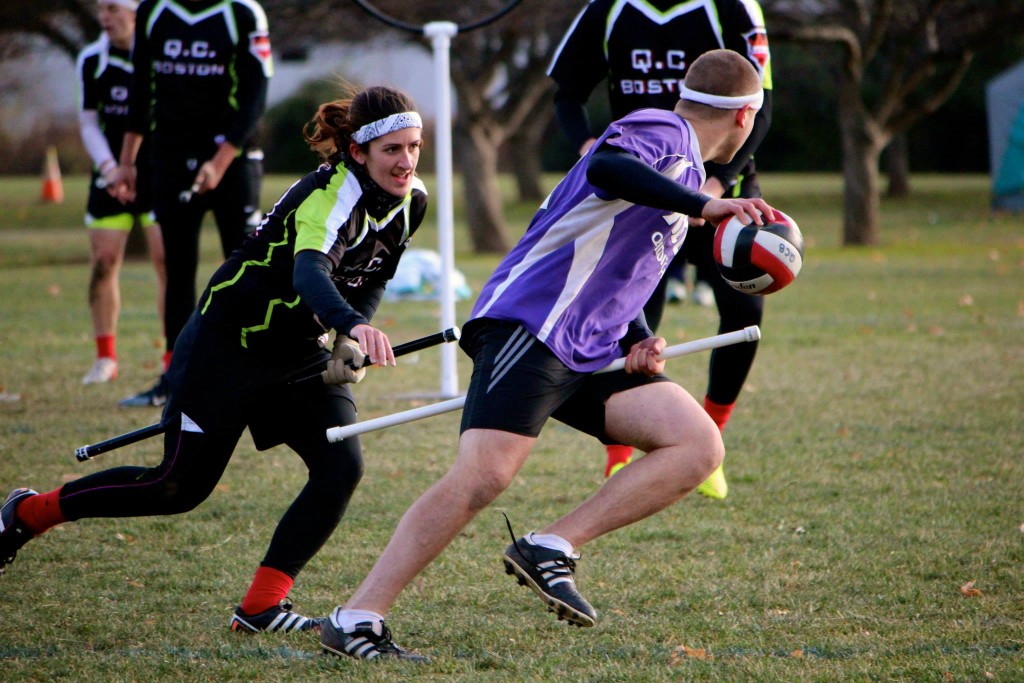
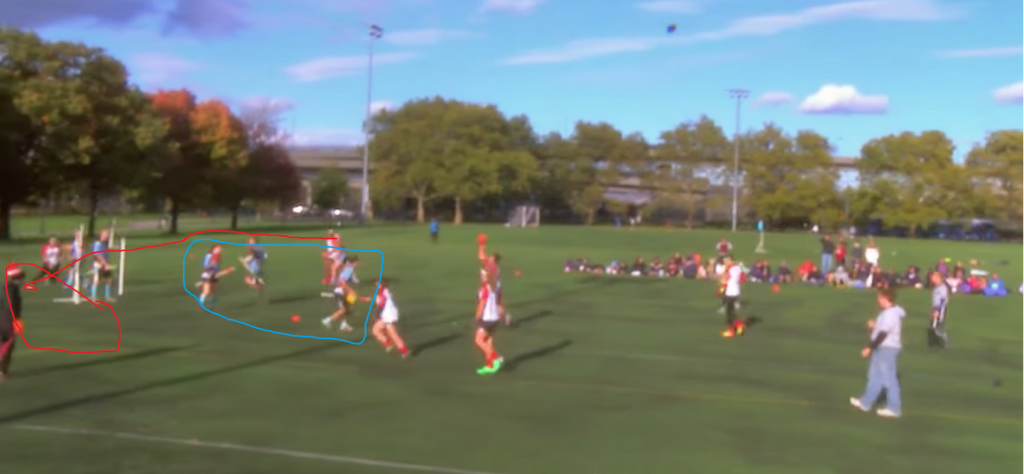
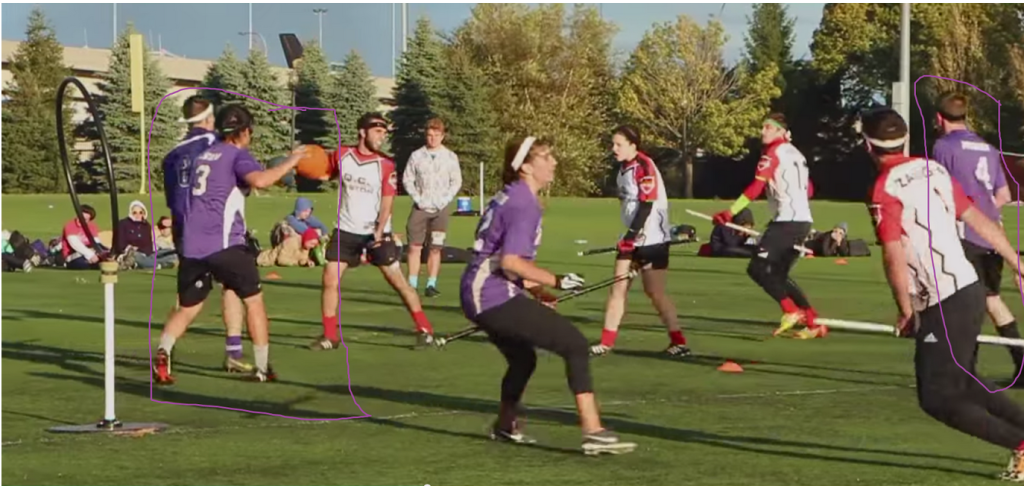
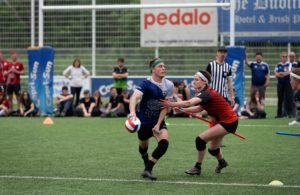

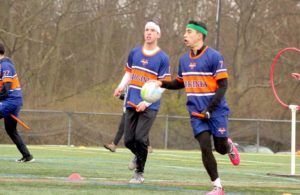
One Comment